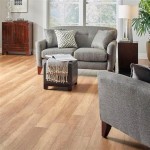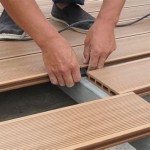Foam Underlay and Korean-Style Wood Flooring: An Overview
Korean-style interior design, often characterized by its minimalist aesthetic, natural elements, and harmonious balance, has gained considerable global popularity. One crucial aspect of installing traditional and modern Korean wood flooring is the underlayment, particularly foam underlay. This article will explore the role of foam underlay in Korean-style wood flooring, examining its benefits, considerations, and impact on achieving a comfortable and aesthetically pleasing living space.
The choice of underlayment is critical for several reasons. It affects the flooring’s longevity, comfort underfoot, and sound insulation. In a Korean home, where the emphasis is often on creating a serene and peaceful environment, the right underlayment contributes significantly to the overall ambiance.
Traditional Korean houses, known as Hanoks, often feature raised wooden floors. While modern adaptations may incorporate concrete subfloors, the principles of warmth, comfort, and sound absorption remain essential. Therefore, selecting a suitable foam underlay becomes paramount.
Understanding Foam Underlay: Types and Properties
Foam underlay is a layer of cushioning material installed between the subfloor and the wood flooring. It is typically made from various types of foam, each with its unique properties and advantages. Common types include polyethylene (PE) foam, polypropylene (PP) foam, and recycled foam.
PE foam is generally lightweight and cost-effective. It provides basic cushioning and moisture resistance, making it a suitable option for budget-conscious projects. However, it may not offer the same level of sound insulation or durability as other options.
PP foam is known for its higher density and improved durability compared to PE foam. It offers better sound absorption and can withstand more foot traffic. PP foam is a good choice for areas with moderate to high activity levels.
Recycled foam underlay is an environmentally friendly option made from recycled materials, such as recycled tires or plastic. It can offer excellent sound insulation and cushioning while contributing to sustainability efforts. The specific properties vary depending on the materials used in its construction.
The thickness of the foam underlay also plays a crucial role. Thicker underlays generally provide more cushioning and sound insulation, but they may also affect the stability of the flooring, especially with certain types of wood flooring. Manufacturers typically provide recommendations for underlay thickness based on the specific flooring product being used.
In addition to the type and thickness, other properties to consider include the density of the foam, its moisture resistance, and its thermal insulation. High-density foam offers better support and durability. Moisture-resistant underlays are essential for protecting the wood flooring from moisture damage. Thermal insulation can help regulate the temperature of the floor, contributing to energy efficiency.
Benefits of Using Foam Underlay in Korean-Style Wood Flooring
The incorporation of foam underlay provides numerous benefits, enhancing both the comfort and performance of Korean-style wood flooring. These benefits align with the key principles of Korean design: creating a harmonious, comfortable, and aesthetically pleasing living space.
One of the most significant benefits is improved comfort underfoot. Foam underlay provides a cushioning effect, making the floor feel softer and more comfortable to walk on. This is particularly important in Korean homes, where people often sit and relax on the floor.
Sound insulation is another crucial benefit. Foam underlay can significantly reduce the transmission of sound, both impact noise (e.g., footsteps) and airborne noise (e.g., voices). This is especially valuable in apartments or multi-story homes, where noise can be a major concern. By minimizing noise pollution, foam underlay contributes to a more peaceful and relaxing living environment, aligning with the Korean emphasis on tranquility.
Foam underlay also provides a degree of thermal insulation. It can help to regulate the temperature of the floor, making it warmer during the winter and cooler during the summer. This can lead to energy savings and improved comfort throughout the year. The thermal properties can contribute to the Ondol (underfloor heating) system common in Korean homes, making the floor more comfortable during the cold season.
Furthermore, foam underlay can help to protect the wood flooring from moisture damage. It acts as a barrier between the subfloor and the flooring, preventing moisture from seeping up and damaging the wood. This is particularly important in areas with high humidity or where there is a risk of water leaks.
Finally, foam underlay can help to extend the life of the wood flooring by providing a more stable and supportive base. It protects the flooring from impacts and vibrations, reducing the risk of damage and wear. This can result in a longer lifespan for the flooring and reduced maintenance costs.
Considerations When Selecting and Installing Foam Underlay
Choosing the right foam underlay and installing it correctly is essential to realize its full benefits. Several factors should be considered when selecting and installing foam underlay for Korean-style wood flooring.
The type of subfloor is a crucial consideration. Different subfloors require different types of underlay. For example, concrete subfloors require an underlay with good moisture resistance, while wooden subfloors may benefit from an underlay with good sound insulation. Ensure the chosen underlay is compatible with the existing subfloor material.
The type of wood flooring is also important. Different types of wood flooring have different requirements for underlay. Some hardwoods, such as solid hardwood, may require a thinner, denser underlay to provide adequate support. Engineered wood flooring, on the other hand, may benefit from a thicker, more cushioned underlay. Always consult the flooring manufacturer's recommendations for the appropriate underlay.
The intended use of the room is another key factor. High-traffic areas, such as hallways and living rooms, may require a more durable underlay than low-traffic areas, such as bedrooms. Consider the level of foot traffic and the potential for wear and tear when selecting the underlay.
Proper installation is crucial for the performance of the foam underlay. The subfloor should be clean, level, and dry before installing the underlay. Any debris or unevenness in the subfloor can affect the stability of the flooring and reduce the effectiveness of the underlay. Follow the manufacturer's instructions carefully when installing the underlay, ensuring that it is properly aligned and secured.
Moisture testing is a crucial step before installing any flooring or underlay. Conducting a moisture test on the subfloor is vital to ensure that it is within acceptable moisture levels. Excessive moisture can lead to mold growth, warping of the wood flooring, and premature failure of the underlay.
Acclimation of the wood flooring is also important. Allow the wood flooring to acclimate to the room's temperature and humidity for several days before installation. This will help to prevent warping or shrinkage after installation. The underlay should also be stored in the room for a period of time to acclimate.
Finally, consider the overall budget. Foam underlay comes in a wide range of prices, so it is important to choose one that fits within the budget. However, it is also important to consider the long-term benefits of a higher-quality underlay. Investing in a durable and effective underlay can save money in the long run by extending the life of the flooring and reducing maintenance costs.
By carefully considering these factors, one can select and install the right foam underlay for Korean-style wood flooring, enhancing the comfort, durability, and aesthetic appeal of the living space.

China Polyethylene Foam Underlay Ecolay Factory And Manufacturers Jw

Moisure Proof And Sound Floor Underlay Laminate Flooring Underlayment Foam China High Glossy Gloss Wooden Made In Com

The Top Reasons Why You Need An Underlayment For Hardwood Floors

Choosing Subfloor For Hardwood Tile And Laminate Floors

Acoustalay 250 Wood Flooring 3mm Adhesive Foam Underlay 10m² Roll

Roberts 100 Sq Ft Roll Of Serenity Foam Wood Laminate Underlayment 70 010 The Home Depot

Silver Laminate And Wood Flooring Underlay 3mm

Moisure Proof And Sound Floor Underlay Laminate Flooring Underlayment Foam China High Glossy Gloss Wooden Made In Com

Underlayment Buyer S Guide
Blogs Floor Decor
Related Posts








